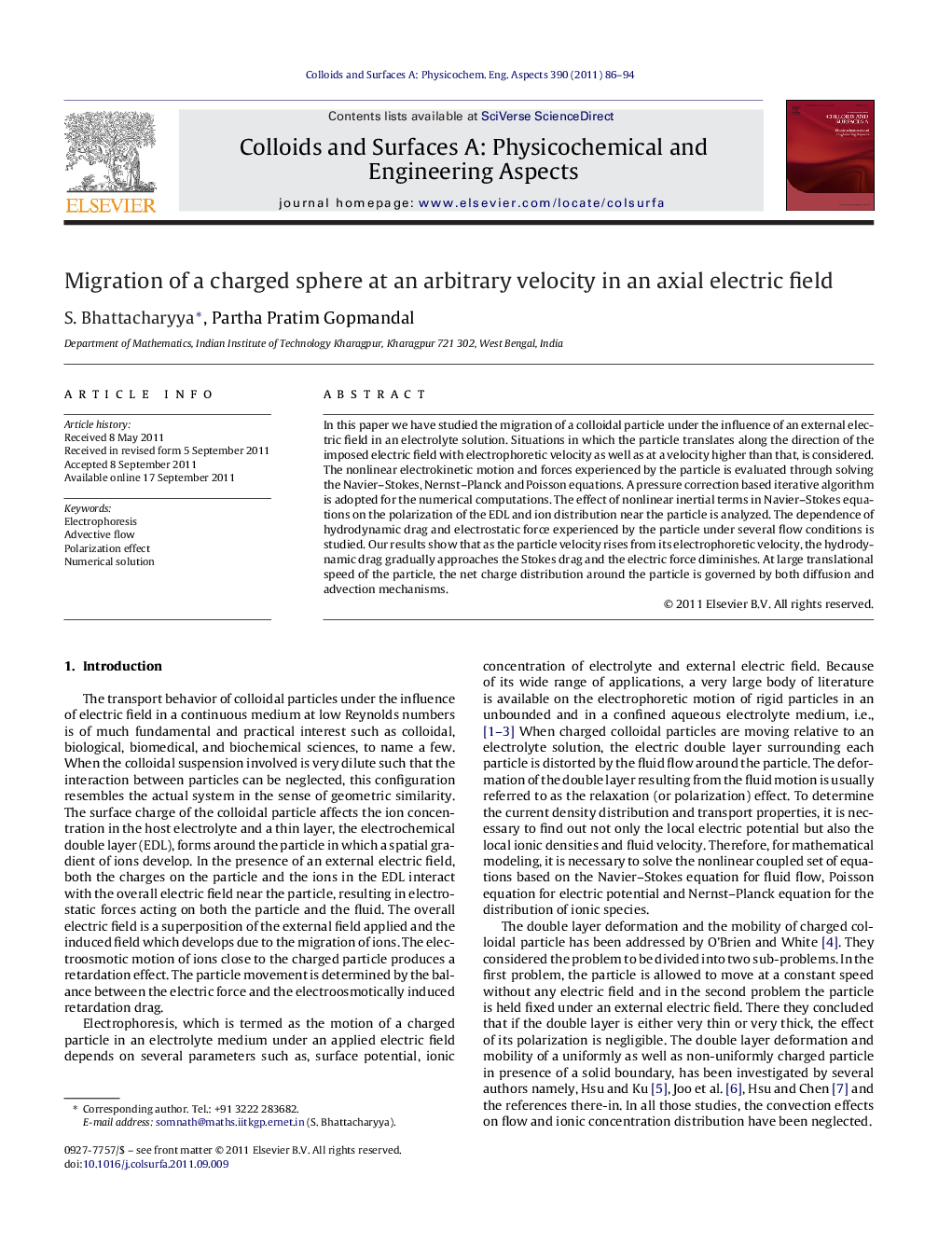| Article ID | Journal | Published Year | Pages | File Type |
|---|---|---|---|---|
| 594469 | Colloids and Surfaces A: Physicochemical and Engineering Aspects | 2011 | 9 Pages |
In this paper we have studied the migration of a colloidal particle under the influence of an external electric field in an electrolyte solution. Situations in which the particle translates along the direction of the imposed electric field with electrophoretic velocity as well as at a velocity higher than that, is considered. The nonlinear electrokinetic motion and forces experienced by the particle is evaluated through solving the Navier–Stokes, Nernst–Planck and Poisson equations. A pressure correction based iterative algorithm is adopted for the numerical computations. The effect of nonlinear inertial terms in Navier–Stokes equations on the polarization of the EDL and ion distribution near the particle is analyzed. The dependence of hydrodynamic drag and electrostatic force experienced by the particle under several flow conditions is studied. Our results show that as the particle velocity rises from its electrophoretic velocity, the hydrodynamic drag gradually approaches the Stokes drag and the electric force diminishes. At large translational speed of the particle, the net charge distribution around the particle is governed by both diffusion and advection mechanisms.
Graphical abstractThe electric force and drag experienced by the particle migrating at arbitrary velocity along the direction of the applied electric field reduces with the increases of velocity (α). Following figures show the variation of electric force ratio with the translational speed of the particle. Filled symbol corresponds to electrophoretic case.Highlights► Forces experienced by the particle moving in electrophoresis rise as the ζ-potential increases. ► Both the drag and electric forces reduce with the rise of migration speed of the particle. ► Hydrodynamic forces dominate the migration at high fluid Reynolds number. ► The advection effects on ionic distribution are evident at higher values of particle migration speed.Figure optionsDownload full-size imageDownload as PowerPoint slide
